Imagine the excitement of living in Lombardy at the end of the 1960s: a region in full expansion, full of work and opportunities, where middle class families were beginning to discover the little luxuries related to welfare, such as for example Sunday trips out of town.
Following the American model for themed parks, in the lakes district huge entertainment parks began to rise around here, veritable Neverlands designed to satisfy the wildest fantasies of any visitors.
The history of the Consonno ghost town began in those years, a story that speaks of enterprise and of relationship with the territory, and also about a tragic event that erased forever the dream of the Italian Neverland.

Discover the surreal ghost town of Consonno this winter
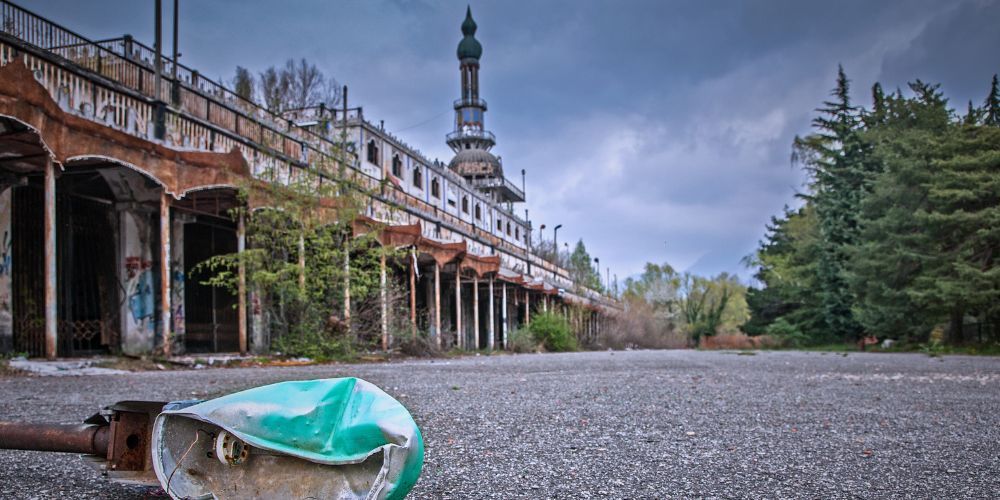
Fog shrouds the roads and the bare branches of skeletal trees brush the gray sky; for one of the most famous ghost towns, that's a rather ordinary landscape.
But despite its melancholy and ghostly appearance, winter is perhaps the best time to discover the charm of Consonno, that truly unborn Italian Neverland.
The eerie silence, the biting cold and the dim lights of winter, here in this little corner of the province of Lecco not far from the lakes shores, shape a unique and somewhat haunted atmosphere.
Today the ghost town of Consonno is just a faint reminder of the ambitious - sadly failed - dream of Count Mario Bagno. But at the same time, perhaps unexpectedly, over these years it has transformed into an unusual destination attracting many curious visitors, street artists and travelers with a really out of the box mindset.
Today we'll guide you through this surreal place, a real tour through the lost Italian Neverland with all the information you need to make the most of your visit here this winter.
How to get to Consonno: a road trip to the Italian Neverland
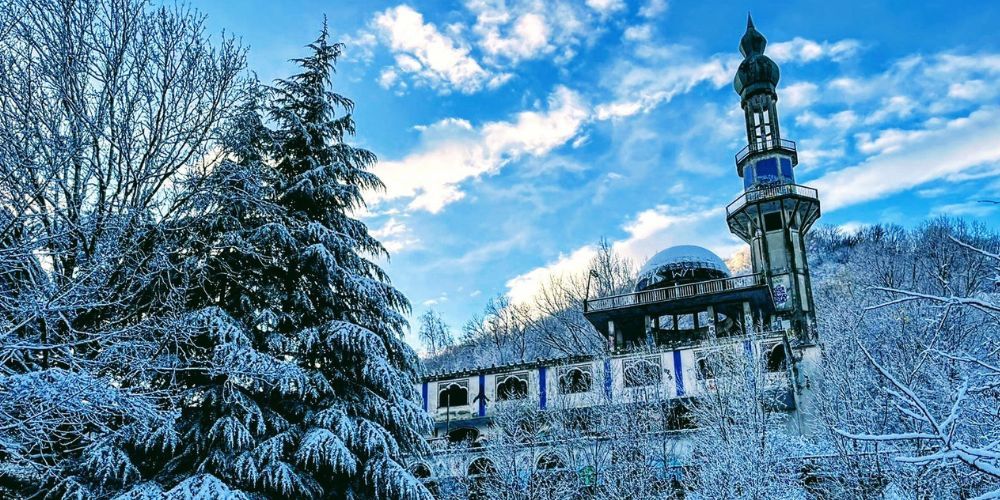
We set off early by car for Consonno on a sunny Sunday at the end of November. Coming from the south (from Milan, iconic city to explore, SS 36 Lago di Como e dello Spluga) we enjoy the enchanting spectacle of the snow-capped Alps, which get closer and closer as we continue towards the Lecco branch of Lake Como.
Today, the whole of the Brianza area is one of the largest urban agglomerations in Italy: expanses of buildings stretch across the Po Valley, expanding from Milan in every direction like an immense spider's web.
The weather has changed quickly since we left, and we are now amid a grey, late autumn drizzle. The GPS tells us that we are only 20 minutes left to Consonno when the road begins to climb up Mount Regina.
As we leave one of Italy's most industrialised areas behind us we plunge into chestnut woods and around us, the landscape becomes more rural, a view that reminds of what Brianza must have been like in the Sixties.
Here the agricultural economy was flourishing, sustained by chestnuts, celery and leek cultivation, a pastoral place dotted with farmsteads where human life followed the natural rhythm of the seasons. Yet, in Consonno no one owned the house they lived in or the land they cultivated: everything here belonged to the Immobiliare Consonno Brianza, owned by a few wealthy families.
We finally reached our destination: we parked the car on the dirt road through the woods, passed the barrier blocking the way for vehicles and walked towards the ghost town of Consonno, just over one kilometre away. In the meantime, the rain has turned into big wads of white snow.
Walking in the woods: the origin of the Italian Neverland
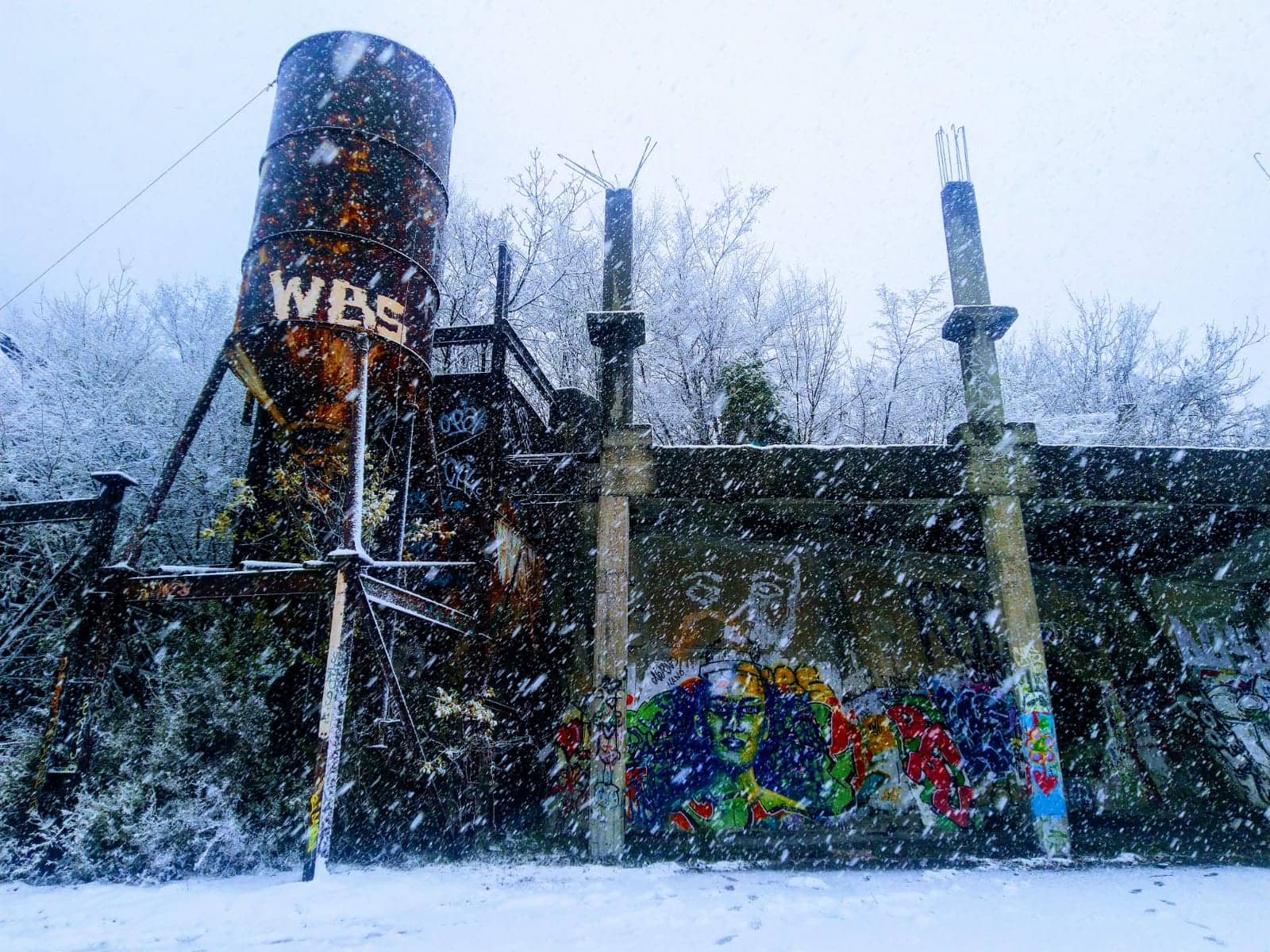
The snow falls thickly and compactly and, after a short time, has already covered everything with a white blanket, turning the forest into a magical, almost unreal place.
It's difficult to imagine how a place so full of quiet and silence could have inspired a man like Count Mario Bagno to give life to such a futuristic and ambitious project, like the Italian Neverland in Consonno. Probably, it was the desire to imitate similar initiatives related to social and urban development, as in the case of Rosazza.
This eccentric entrepreneur, riding the wave of industrialisation, grew his construction company by building airports, roads and infrastructures all over Italy. And Consonno's dream began to come to life: panoramic circuits, sports fields, theme hotels, restaurants, funfairs, miniature golf courses, skating rinks, a zoo, a medieval castle and many dance halls. Hence, the true Neverland where it's always holiday.
During an interview with a Swiss TV station, Mario Bagno announced that he was going to build an autodrome in Consonno as well: there was no longer any limit to the possibilities and ambition of this entrepreneur.
Consonno: the Minaret and the murals gallery
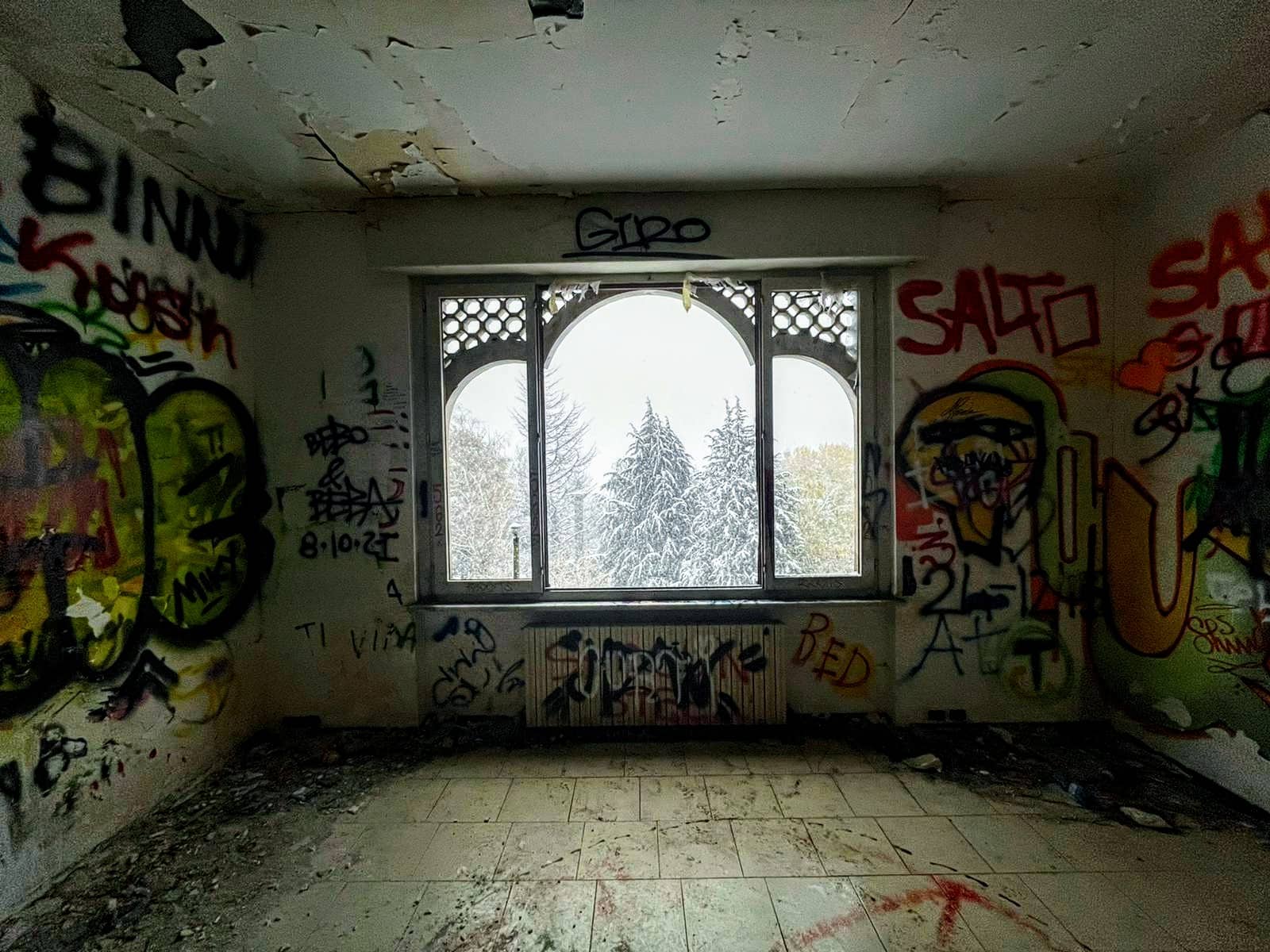
We finally reach Consonno from the high road, now also covered by a frosty white blanket. In front of us it rises to the sky the Minaret, the tower in the style of a mosque and the symbol of this Neverland.
There was a long shopping gallery on the ground floor, while on the first and second floors, there were flats of about 70 square metres each. In front of the Minaret was a fountain featuring spectacular jets of water. Today, however, the whole building is in ruins and the walls covered with coloured murals, a legacy of many rave parties that have taken place within these walls over the last twenty years, becoming an icon in the street art universe.
Under the Minaret, we can see the interiors of the flats now stripped of all their doors: the destruction of the rooms has been meticulous, but here and there we can still find the old cobalt blue tiles and the pipes of the toilets. Peering inside the structure we realise that the rooms must have been princely: the large windows overlooking the valley have wide ogival arches, and from the outside, you can still see the colours of the decorations.
We are very excited, we point out to each other the most beautiful murals, the most remarkable remains of the ancient structures, and we feel like real urban archaeologists. But also some kind of adventurers, discovering one of the most unreal places in Italy.
Looking out the back of the building we catch a glimpse of the arches leading to Consonno from the lower road, and we can make out a few letters of the writing on them: "Consonno is the smallest but most beautiful village in the world".
The rust has ruined the inscription incredibly, as it should be in a real ghost town, but it still makes us imagine how exciting it must have been to get close to this dream village in the years of its prime.
Consonno, where it's always holidays
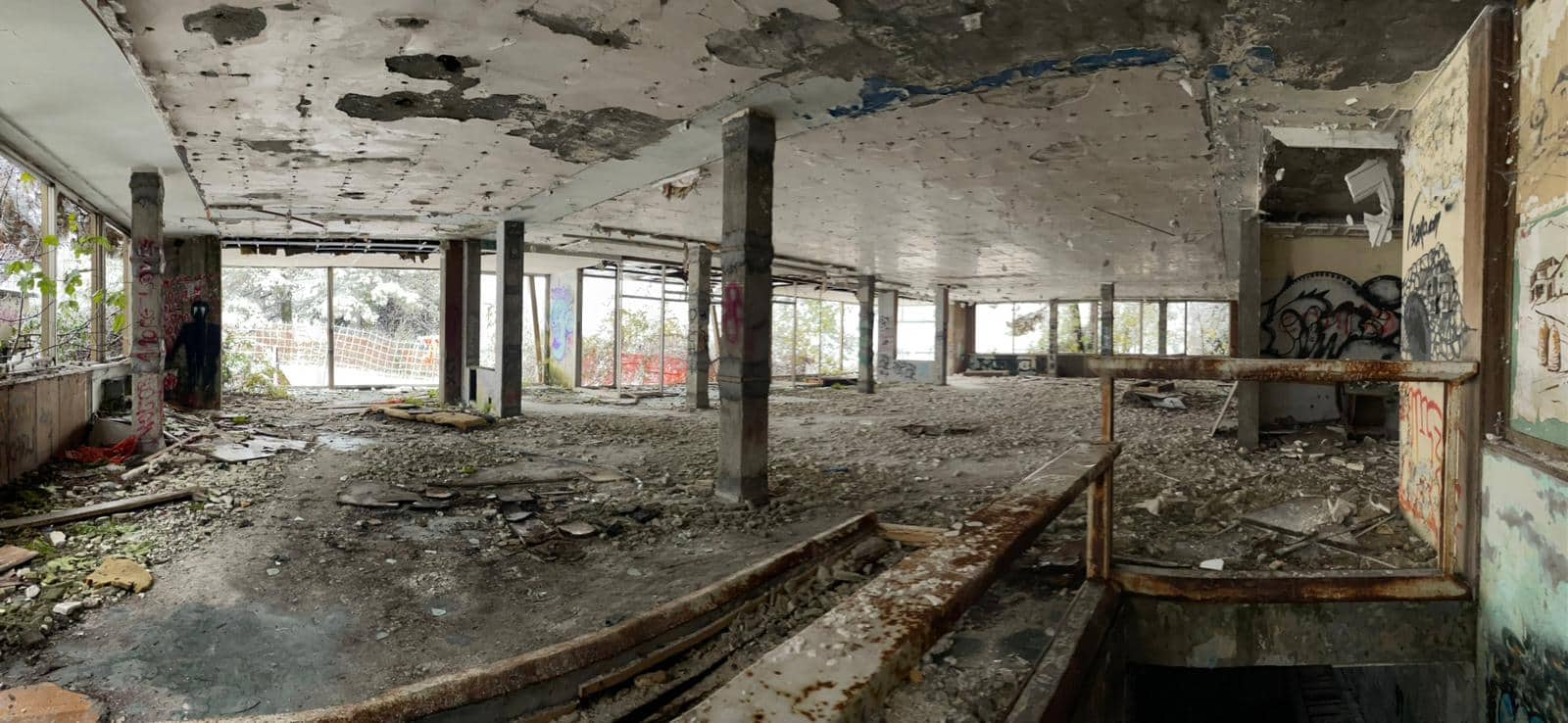
Going down the main street, we observe a large building on the right, the medieval castle: this is entirely forsaken and covered in writing and murals too and inside the object has been carefully torn to pieces.
On the ground, we find remnants of doors, glass, walls, and plaster. Once again, we feel the genuine emotion of being archaeologists in an excavation, where every thing tells a story.
The main room of this building was a luxurious ballroom, called the Hall of Celebrations. Imagine the thousands of people who must have crowded this place during the dancing evenings, the great guests starts of music and showbiz, the lights always on and a world dedicated to lightheartedness.
Online it is still possible to find posters and postcards of the time, faded images published in the local press that highlight the furnishings from the film studios that crowded Consonno, like cannons and sphinxes.
Consonno and its graffiti
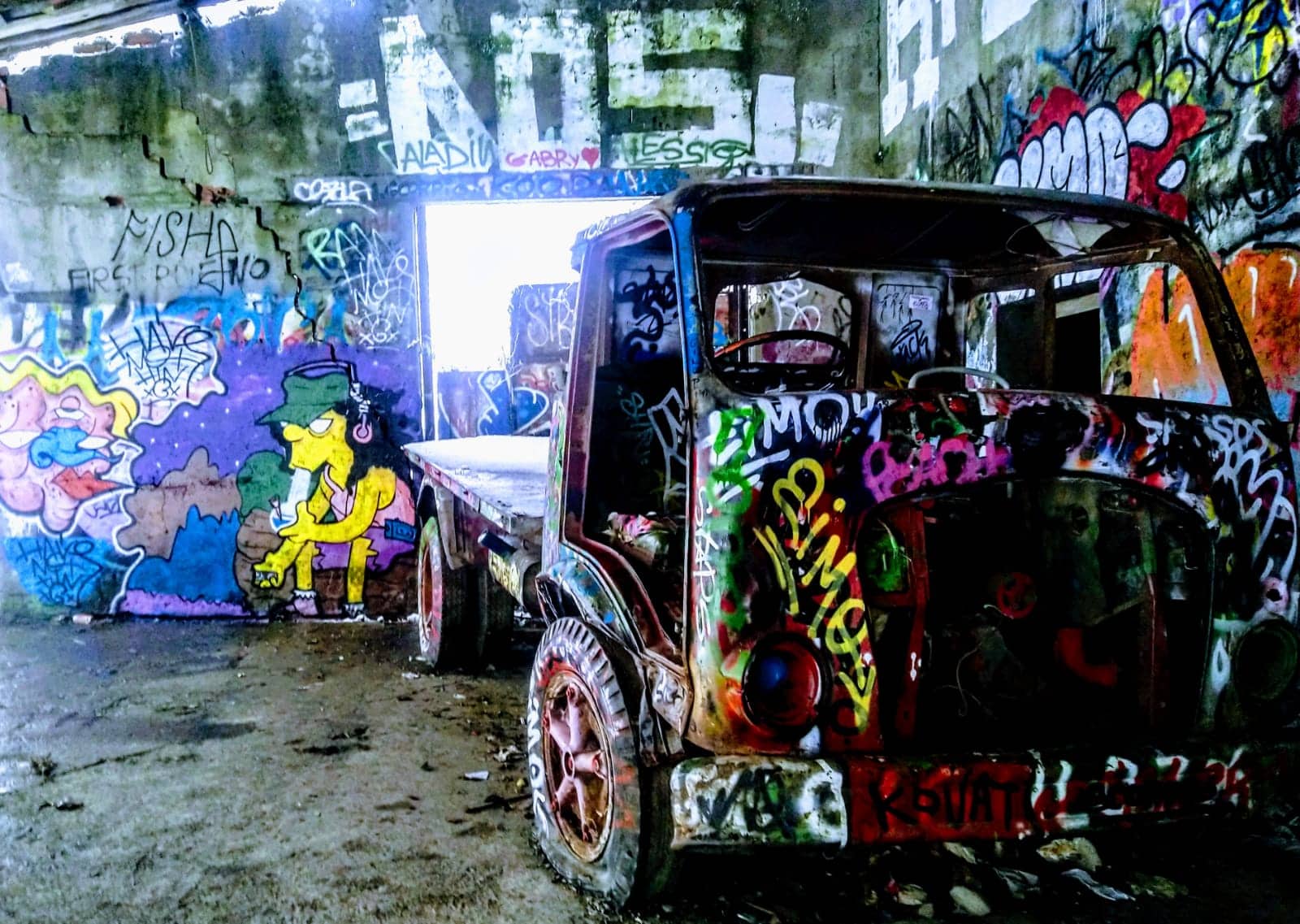
It has finally stopped snowing, and we can enjoy Consonno at its best: an explosion of colours shining in the sunlight in a delicate pure white setting.
We continue our descent down the slope and suddenly we see something beautiful on the right: an old truck with no doors, completely rusted and completely covered in colourful writing.
These little gems of urban art make Consonno a genuinely unique ghost town, still pulsating with life even though it's many decades that no one actually dwells here.
After the years of the economic boom, Consonno went through a period of decline that gradually led it to no longer be the desirable and incredible destination it used to be: the 1970s were not kind at all to the Italian Neverland in Brianza.
Consonno: the dream of a Grand Hotel

The last stop on our tour through the ghost town of Consonno is a dream...that is the Grand Hotel, located about a quarter of an hour's walk from the Minaret. We pause to admire the landscape: snow has covered the high ground, but just below us, the plain is still green and brown with late autumn colours.
We slowly descend along the mountainside, passing under the arches with inscriptions celebrating Consonno, now in ruins. But how could such a great project fall into oblivion? How could a place of avantgarde and joyful turn into a ghost town? That's easy: it was man's fault.
All the splendid architectural works of the Consonno's Neverland, indeed, had damaged the delicate hydrogeological balance of the area during their construction, making it even more fragile.
And in 1966 constant rains had caused large masses of mud to fall down to valley, curbing the influx of tourists.
But the final blow came in 1976 with a landslide destroyed the main road leading to the heart of Consonno, right in front of attractions like the Pagoda and the "Missile Bagno".
In 1981, the entrepreneur attempted to fix things and relaunch the park, but unsuccessfully: tourists were no longer attracted by the novelty of the place and even locals began abandoning their homes to move elsewhere.
Inside the Consonno's Hotel, Mario Bagno had a retirement home built where he spent the last years of his life, until he passed away on October 22, 1995 at the age of 94. The retirement home was then definitively closed in 2007.
A few days after the closure, more than one thousand people came to Consonno for the Summer Alliance, a large rave party lasting three days: for the last time, a large amount of people gathered under the Minaret in Consonno to celebrate happiness and life.
A final farewell to a project that changed the face of Lombardy, a glorious and cheerful funeral to a personality maybe too much visionary for the Italian enterprise, with graffiti and techno music.
Consonno ghost town shown on the big screen
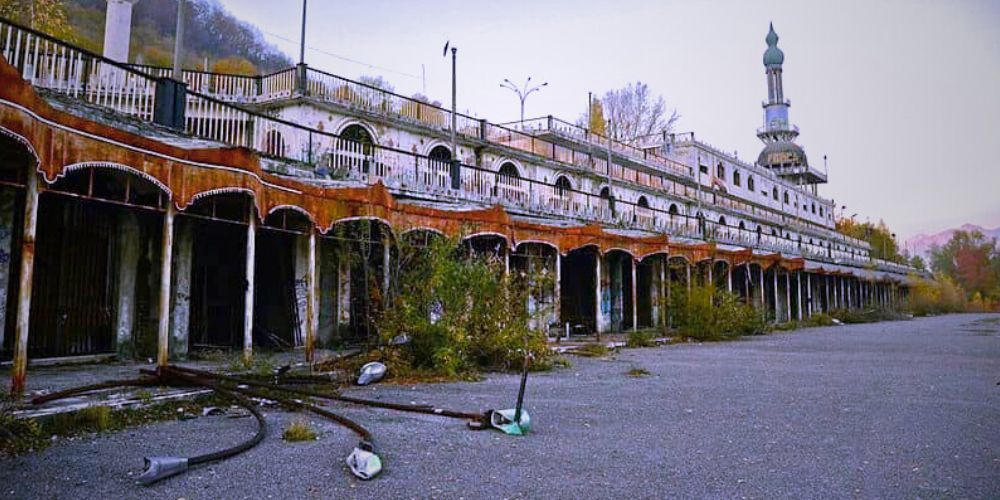
Despite the general state of abandon, over the years - still today - the picturesque village of Consonno serves as a cinematographic set and to shoot music videos and commercials.
Director Davide Ferrario chose Consonno as the set for his film Figli di Annibale, in 1998. The ghost town was also used by Levi's for a commercial, MTV's music channel and the second season of the web series Skypocaliypse (never completed).
In 2008 in Consonno was set the medium-length film Armi by director Andrea Bettoni, a noir film with western influences. In 2013 it was the turn of the Glassing company, which chose this ghost town for a commercial about glasses. In 2015, Lory Del Santo's web series, The Lady, was filmed here; BMW shot a commercial here the same year.
Many Italian musicians have decided to shoot their video clips in the ruins of Consonno, including the Studio 3 video "Voglio star con te" and Pino Scotto's "Don't Touch The Kids".
About the author
Written on 04/12/2021


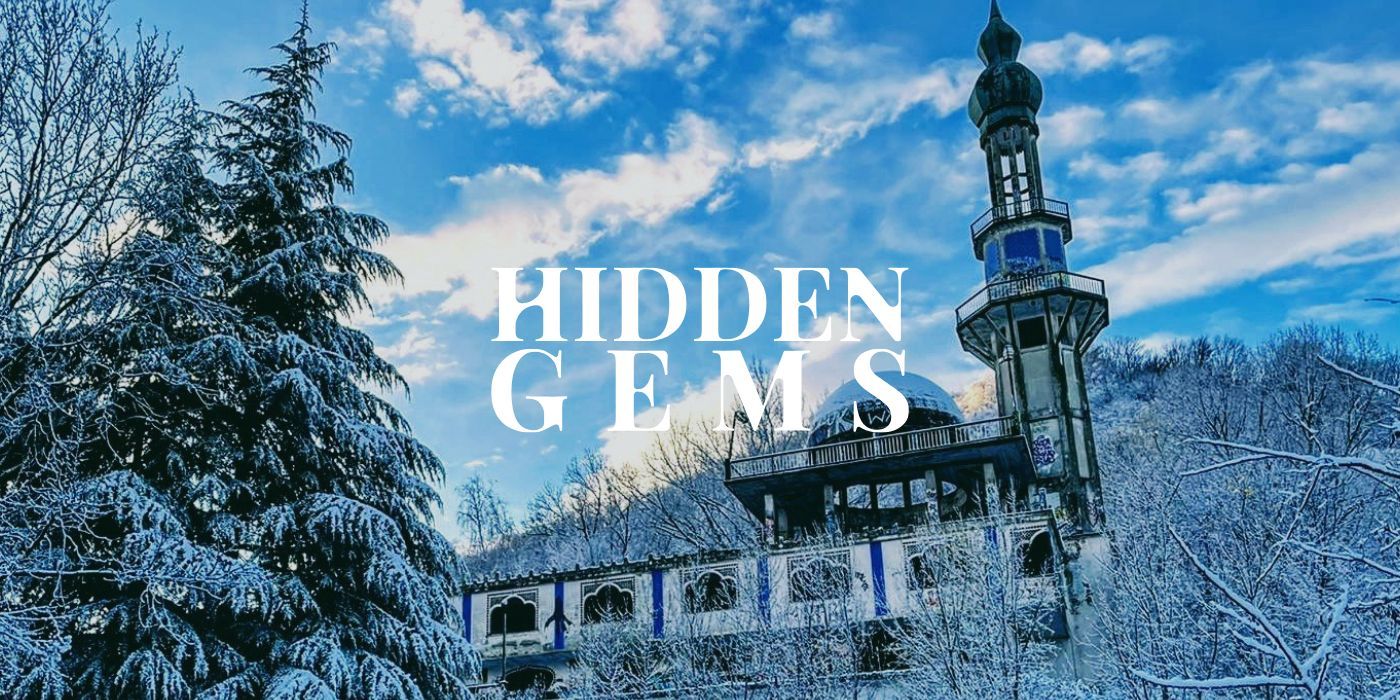

Gloria Venturini
Find out the surreal vibes of the ghost town of Consonno, the lost Italian Neverland now become an authentic unusual destination out of the box.